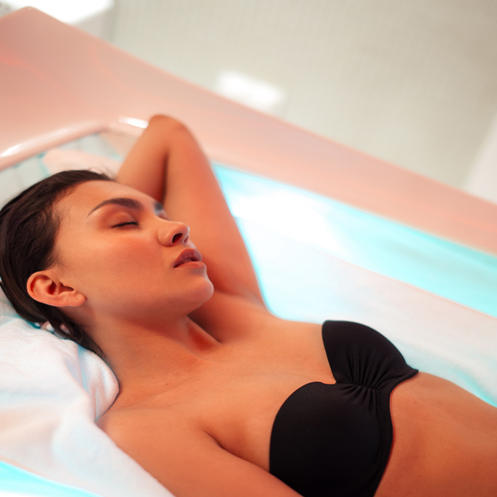
Chromotherapy
Alternate names: Chromothérapeute, Chromotherapie, Chromothérapie, Chromotherapist, Color Medicine, Color Therapy, Colorologie, Colorology, Cromoterapia, Thérapie des Couleurs, Thérapie par les Couleurs
Background
Chromotherapy, or color therapy, is the use of color or colored light for therapeutic purposes. There is no standard education or training for practitioners of chromotherapy. Chromotherapy is not a licensed health practice in North America.
Chromotherapy is used for depression, stress, fatigue, and many other conditions, but there is no good scientific evidence to support these uses.
Chromotherapy is used for depression, stress, fatigue, and many other conditions, but there is no good scientific evidence to support these uses.
Safety Safety definitions
Chromotherapy is POSSIBLY SAFE when used appropriately. No side effects of chromotherapy have been reported.
Special Precautions & Warnings:
Pregnancy and breast-feeding: Not enough is known about the use of chromotherapy during pregnancy and breast-feeding. But so far there's no reason to believe that it might be harmful in women who are pregnant or breast-feeding.Effectiveness
NatMed Pro rates effectiveness based on scientific evidence according to the following scale: Effective, Likely Effective, Possibly Effective, Possibly Ineffective, Likely Ineffective, Ineffective, and Insufficient Evidence to Rate.
Insufficient evidence Effectiveness definitions
- Stress. Early research in healthy college students shows that blue light may reduce stress after a test faster than white light.
- Depression.
- Anxiety.
- Fatigue.
- Pain.
- Cramps.
- Headache.
- Migraine headache.
- Diabetes.
- High blood pressure.
- Asthma.
- Cough.
- Other conditions.
Dosing & administration
The appropriate or safe use of chromotherapy depends on several factors such as the condition being treated or the person administering the treatment. Be sure to seek and follow relevant directions from your physician or other healthcare professional before using this treatment.
Interactions with pharmaceuticals
It is not known if this treatment interacts with any medicines. Before using this treatment, talk with your health professional if you take any medications.
Interactions with herbs & supplements
There are no known interactions with herbs and supplements.
Interactions with foods
There are no known interactions with foods.
Action
Chromotherapy practitioners believe that color can be used to correct energy imbalances which are the cause of disease. A chromotherapist applies specific colors or lights to specific points on the body called "chakras". Different colors have different effects. For example, red is thought to increase pulse rate, blood pressure, and breathing rate. Therefore, it is often used for circulatory conditions. Blue is believed to cause relaxation and calm. Therefore, blue is used for headaches, pain, cramping, stress, and other conditions. There is no reliable scientific support for these beliefs.
vital.ly has licensed monographs from TRC Healthcare.
This monograph was last reviewed on 31/05/2023 10:00:00 and last updated on 21/11/2020 02:18:14. Monographs are reviewed and/or updated multiple times per month and at least once per year.
Natural Medicines disclaims any responsibility related to medical consequences of using any medical product. Effort is made to ensure that the information contained in this monograph is accurate at the time it was published. Consumers and medical professionals who consult this monograph are cautioned that any medical or product related decision is the sole responsibility of the consumer and/or the health care professional. A legal License Agreement sets limitations on downloading, storing, or printing content from this Database. No reproduction of this monograph or any content from this Database is permitted without written permission from the publisher. It is unlawful to download, store, or distribute content from this site.




